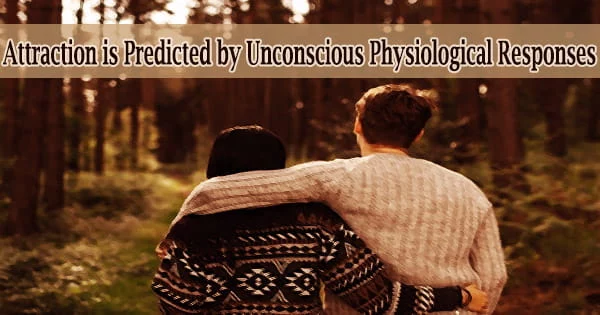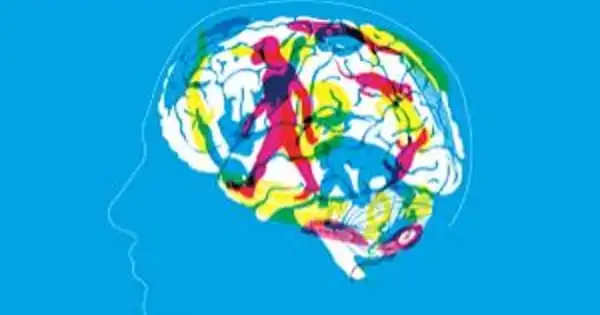Particularly when they first meet, it can be very difficult to tell whether two individuals will be attracted to one another. Prochazkova and colleagues’ fascinating study, which was published in November 2021 in the journal Nature Human Behaviour, demonstrates that a couple’s subliminal physiological reactions to one another may be able to anticipate their attraction to one another.
The scientists discovered that when people are attracted to one another, their physiological arousal reactions, such as heart rate, also coincide. Further evidence from this study points to the fact that our subconscious physiological reactions are better indicators of attraction than our consciously chosen ones (such as smiling and eye gaze). Subconscious physiological synchronization may be a sign that couples “click” or experience a “spark” with one another.
The study’s principal investigator, Prochazkova, and associates from the Netherlands and the UK looked at heterosexual men and women’s physiological and self-reported reactions to their first time going on a blind date.
The scientists created a portable first-date cabin that they took to festivals all across the Netherlands. They enlisted 70 single women and 70 single men, ages 18 to 38, to take part in a “blind date” study.
Each participant received a partner of the opposite sex at random, and they were unable to see one another until the researchers removed the barrier separating them. Participants wore sensors to monitor skin conductance and heart rate in addition to eye-tracking eyewear.
Participants first rated their partner’s attractiveness before engaging in a 2-minute verbal and 2-minute nonverbal conversation. While some individuals interacted verbally first, others interacted nonverbally. In order to determine whether they would like to go on a second date, couples rated their re-attraction to one another.
Men were more attracted to women than vice versa (53% of men and 34% of women wanted to go on a second date with their spouses), but only 17% of couples wanted to go on a second date together.
(Couples that mutually desired a second date were provided with each other’s contact information one week later.)
The researchers discovered that dyads’ fondness for one another was not predicted by smiling, laughing, or eye contact all controllable and conscious physiological responses. However, couples who were attracted to one another often matched one another’s levels of relatively unconscious and uncontrollable physiological responses, such as skin conductance and heart rate.
Specifically, the more couples’ SC (skin conductance) and their HR (heart rate) synchronized, the more attracted participants were to their partner.
The researchers came to the conclusion that strangers who had synchronized changes in their skin conductance and heart rate (measures of arousal) also experienced stronger feelings of attraction. During the interaction, some pairs developed stronger feelings for one another while others developed weaker feelings.
Although couples did have a tendency to return each other’s grins, giggles, head nods, and eye contact, doing so did not indicate romantic interest between those couples. It’s interesting that couples’ unconscious and unintentional physiological reaction synchronization greatly predicted their shared attraction.
The authors state: “Specifically, the more couples’ SC (skin conductance) and their HR (heart rate) synchronized, the more attracted participants were to their partner.”
The researchers discovered that enhanced attraction was connected to coordinated physiological reactions in verbal and nonverbal encounters. The authors emphasize that matching physiological arousal responses between the two persons in a pair served as a better predictor of attraction than individual physiological responses alone.
The authors suggest that “these results highlight the importance of subconscious physiological coupling in the development of romantic attraction.”
Additionally, they point out that physiological arousal matching is the outcome of “genuine emotional interaction” because it requires both partners’ neural systems to modify in reaction to one another’s physiology and is difficult or impossible to control on purpose.
The direction of the association between physiological arousal synchrony and attraction is still unknown, the authors admit. It’s possible that increased liking results from synchrony, which happens when couples’ physiological reactions synchronize, or it’s possible that synchrony results from increased liking.
The authors note that this sample was restricted to heterosexual Dutch couples and advise future research on same-sex relationships. According to the researchers’ review, physiological synchrony is linked to romantic happiness and the capacity to correctly gauge a partner’s emotional state in long-term relationships.
When partners engage in intimate behaviors like eye contact or physical contact, physiological reactions are also more likely to match. Researchers have hypothesized that matching physiological responses may help couples understand one another’s emotions more deeply.
















